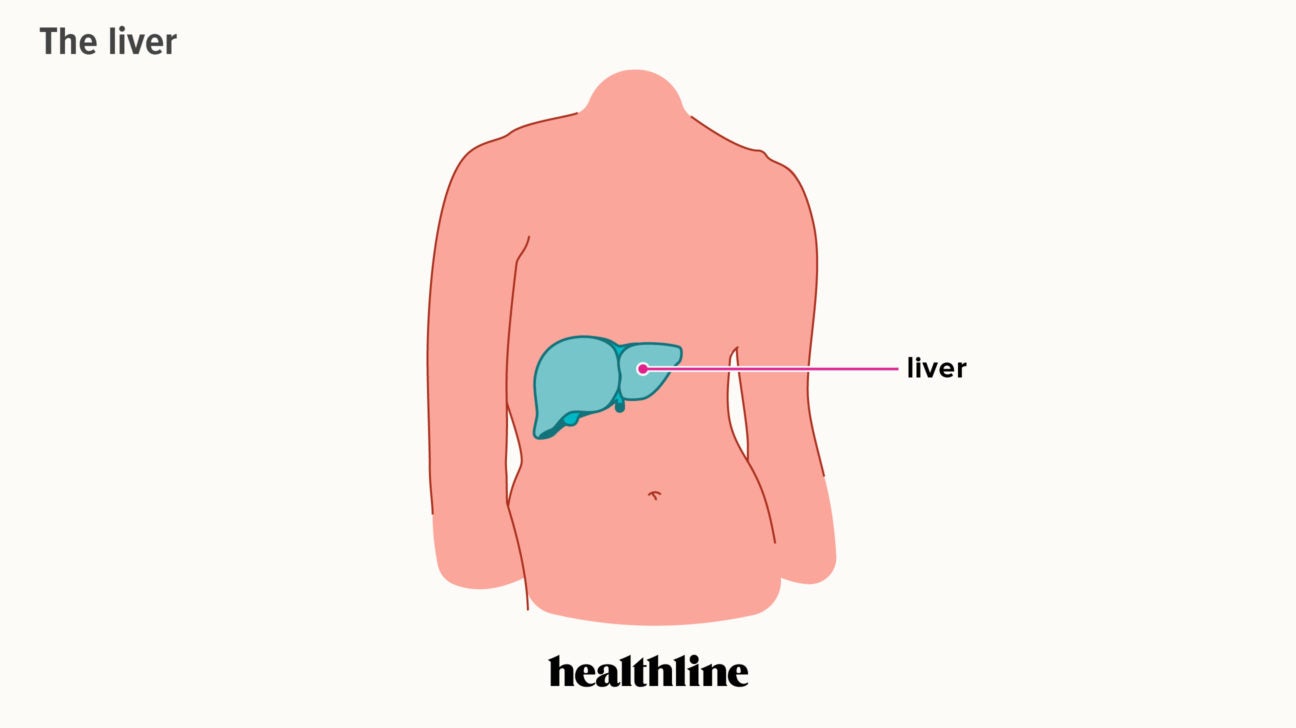What Is Your Largest Organ?
The largest organ in the human body is the skin. It is also the most visible organ and is made up of multiple layers of tissue that protect the body from the environment, regulate body temperature, and provide sensation. The skin is composed of three primary layers: the epidermis, dermis, and hypodermis. The epidermis is the outermost layer and contains cells that produce melanin, which gives the skin its color. The dermis lies beneath the epidermis and contains sweat and oil glands, hair follicles, and blood vessels. The hypodermis is the innermost layer and is made of fat and connective tissue. The skin is an essential organ that serves many important functions and is the body’s largest organ.
Overview of the Human Body
‘s Largest Organ
The human body is an amazing machine, comprised of several interconnected organs and systems that work together to keep us alive and healthy. Among these organs is one that is often overlooked, yet serves a vital role in maintaining our health: the largest organ in the human body, the skin. Not only does the skin protect us from the environment, but it is also responsible for regulating our temperature and keeping us hydrated. It is even home to millions of cells, which are constantly being replaced. This article will explore the anatomy and physiology of this fascinating organ, and discuss why it is so important to our health.
The skin is composed of three main layers: the epidermis, the dermis, and the hypodermis. The epidermis is the outermost layer and is made up of keratinized cells, which act as a barrier against the environment. The dermis, located right below the epidermis, is much thicker and is responsible for the production of collagen and elastin, which help keep the skin firm and elastic. Finally, the hypodermis is the innermost layer and is made up of adipose tissue, which helps to insulate the body.
The skin also contains many glands and hair follicles, which help to keep the body cool and regulate body temperature. Furthermore, it is home to millions of nerve endings, which provide us with sensations such as pain, heat, and cold. Finally, the skin helps to regulate our hydration levels, as it is able to absorb and store moisture.
The skin is a crucial part of our health and wellbeing, and it is vital that we take care of it. It is recommended that we wear sunscreen to protect ourselves from the sun, moisturize regularly, and avoid excessive exposure to heat and chemicals. Additionally, eating nutritious foods and exercising regularly will help to keep the skin healthy and looking its best.
In conclusion, the skin is the largest organ in the human body and plays an essential role in keeping us healthy and functioning. It is important to take care of this organ and ensure that it is always in good condition. By following a few simple steps, we can help to keep our skin in optimal health.
Definition of the Largest Organ
Our bodies are made up of many organs, and while you may have heard of the heart and lungs, you may not know what the largest organ in your body is. The largest organ in the human body is the skin. It can weigh up to 16 pounds and covers an average of 20 square feet, which makes it the largest organ in the human body. It acts as a protective barrier, helping to keep harmful bacteria and toxins out of the body and keeping our vital organs safe. It also helps regulate body temperature and keep us from becoming dehydrated. Our skin is essential in helping us maintain our health and wellbeing.
The skin is also made up of several layers, each of which serves a different purpose. The outer layer is the epidermis, which contains the pigment cells that give us our skin color as well as sweat glands and hair follicles. The middle layer is the dermis, which contains the oil and sweat glands that help keep our skin hydrated. The inner layer is the subcutaneous layer, which is made up of fat and connective tissue that helps to keep us warm and cushions our organs.
Our skin is a complex and multifaceted organ, and it is essential to our health and wellbeing. It helps protect us from the environment, regulate our body temperature, and keep us hydrated. Additionally, it is the largest organ in the human body and covers an average of 20 square feet. Understanding the importance of our skin and how it works can help us take better care of our bodies and maintain our overall health.
Anatomy of the Largest Organ
The human body is a complex and fascinating organism, and its largest organ is no exception. Our largest organ is the skin, and it is responsible for protecting us from the environment, regulating temperature, and much more. But what is the anatomy of the skin? How is it composed and what makes it so important?
The skin is composed of three main layers – the epidermis, dermis, and hypodermis. The epidermis is the outermost layer and it mainly consists of keratinocytes which are cells that form a protective barrier against external elements. This layer is also responsible for producing melanin, the pigment that gives skin its color. The dermis is the middle layer and it contains specialized cells, nerve endings, hair follicles, sweat glands, and blood vessels. It also contains collagen and elastic fibers that provide flexibility and strength. Finally, the hypodermis is the innermost layer and it mainly consists of fat cells that provide insulation and cushioning.
This complex anatomy is what makes the skin the largest and most important organ in the human body. It is not only responsible for providing protection and insulation, it also plays a role in many other vital functions such as synthesizing vitamin D, excreting toxins, and regulating body temperature. So, the next time you take a look in the mirror, remember that your largest organ is working hard to keep you healthy and safe.

Functions of the Largest Organ
The human body is an incredible creation, capable of many amazing feats. One of the most impressive features of our bodies is the largest organ in our body – the skin. Skin is an incredibly important organ, performing a variety of important functions that allow us to survive and thrive. The skin is our body’s first line of defense against the elements, protecting us from infection, dehydration, and other environmental hazards. It also helps regulate body temperature, providing insulation from the cold and dissipating heat. The skin is also the main organ for our sense of touch and helps us to feel pleasure, pain, and other sensations. Additionally, the skin helps to eliminate toxins and waste products from the body. It is also a major source of nutrition, storing and synthesizing vitamins and minerals for our body’s use. Skin also helps to create a barrier against harmful UV radiation from the sun. In short, the skin is an incredibly complex and valuable organ, performing a wide range of essential functions for our body.
Health Risks Associated with the Largest Organ
Our largest organ is often taken for granted, but it is essential to our overall health, and can be exposed to a variety of risks. The skin is the largest organ in the human body and accounts for almost 16% of our total body weight. It is our first line of defense against the outside world, and is constantly exposed to environmental stressors such as extreme temperatures, air pollutants, and other toxins.
The skin is also home to many bacteria, fungi, and viruses. When these organisms are allowed to proliferate, they can lead to a variety of skin conditions such as psoriasis, eczema, and acne. In addition, our skin can be damaged by sun exposure, leading to premature aging and potentially skin cancer. It is important to protect our skin from these risks by wearing sunscreen and taking other precautions.
Another risk to our skin is dehydration. When our skin is not properly hydrated, it can become dry and flaky, and can become more susceptible to damage. By drinking plenty of water and using moisturizers, we can keep our skin hydrated and healthy.
Finally, our skin can also be affected by our diet. Eating a diet high in processed foods can lead to inflammation and can make our skin more prone to damage. Eating a balanced diet with plenty of fresh fruits and vegetables is essential for healthy skin.
By understanding the risks associated with our largest organ, we can take steps to protect our skin and maintain our overall health.
Tips for Healthy Largest Organ Maintenance
Our largest organ is our skin, which plays a critical role in keeping us healthy and protecting us from external threats. Despite its importance, it is easy to forget about the skin and not take proper care of it. In order to ensure your largest organ is functioning properly, here are some tips for healthy skin maintenance.
First and foremost, an important step for skin maintenance is to keep it clean. This means regularly washing your face with a gentle cleanser, exfoliating, and moisturizing. Cleansing helps remove dirt and debris from the surface of the skin, exfoliating removes dead skin cells, and moisturizing helps keep the skin hydrated and soft.
Secondly, it is important to protect your skin from the sun. Everyone should be wearing sunscreen with SPF 30 or higher, especially during the summer months when the sun’s UV rays are more intense. Sunscreen helps protect the skin from sun damage and premature aging.
Thirdly, it is important to stay hydrated. Drinking plenty of water helps keep the skin hydrated and prevents it from becoming dry and flaky. Eating a healthy diet that is rich in antioxidants will help keep the skin looking youthful and vibrant.
Finally, it is important to get regular skin check-ups. Seeing a dermatologist can help detect any changes in the skin that could be an indication of a more serious problem. Early detection and treatment is important for skin health.
By following these tips, you can ensure that your largest organ is healthy and functioning properly. Taking proper care of your skin is essential for maintaining its health and preventing a variety of diseases.
FAQs About the What Is Your Largest Organ?
1. What is the largest organ in the human body?
Answer: The largest organ in the human body is the skin. It covers an area of approximately 2 square meters, making it the largest organ in the body.
2. What are the functions of the largest organ?
Answer: The primary functions of the skin are to protect the body from environmental hazards such as bacteria, viruses, and chemicals. It also helps regulate body temperature, produce vitamin D, and excrete waste products.
3. What is the difference between the skin and other organs?
Answer: The skin is unique in that it is the only organ that is visible from the outside. It is also the only organ that is exposed to the environment. The skin is composed of several layers of tissue, which provide protection and insulation. Other organs are not visible from the outside, and are composed of different types of tissue.
Conclusion
The human body is made up of many different organs, each with its own unique purpose and function. The largest organ in the body is the skin, which covers the entire body and provides protection from the environment. The skin also helps regulate body temperature, protect against infection, and excrete waste. The skin is a complex and ever-changing organ, and its importance cannot be overstated.




